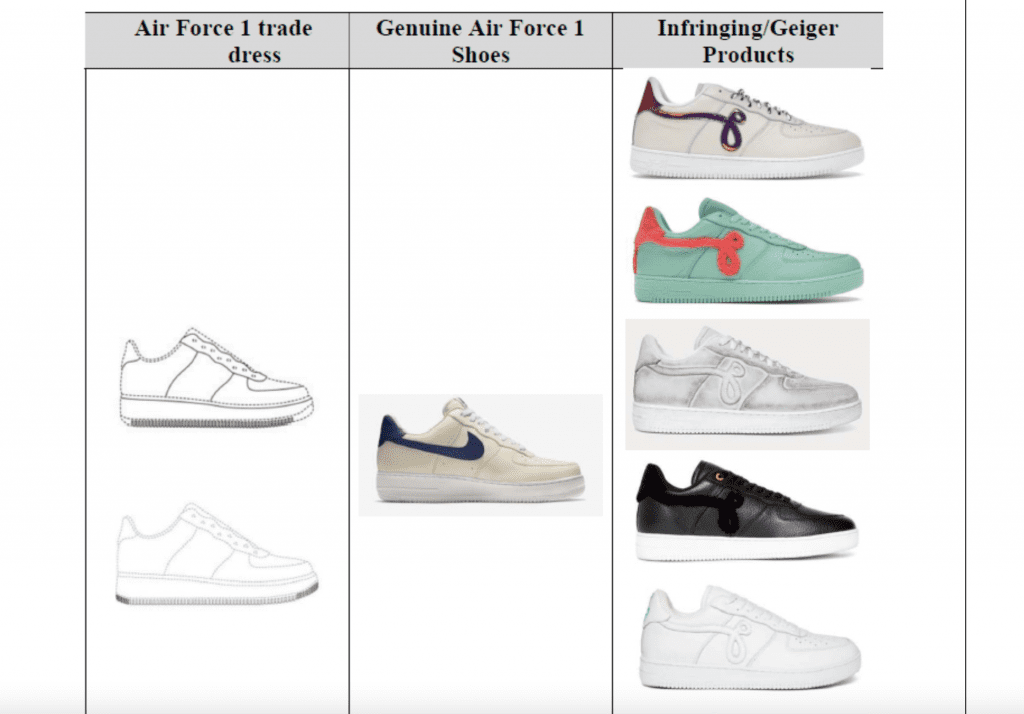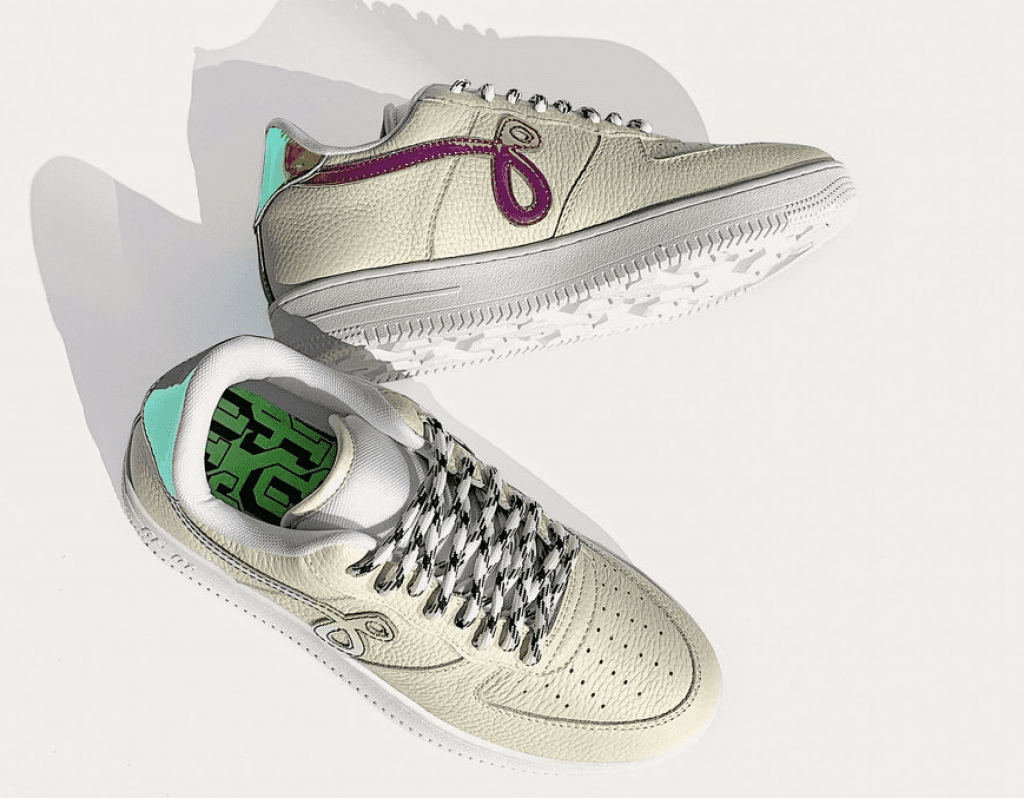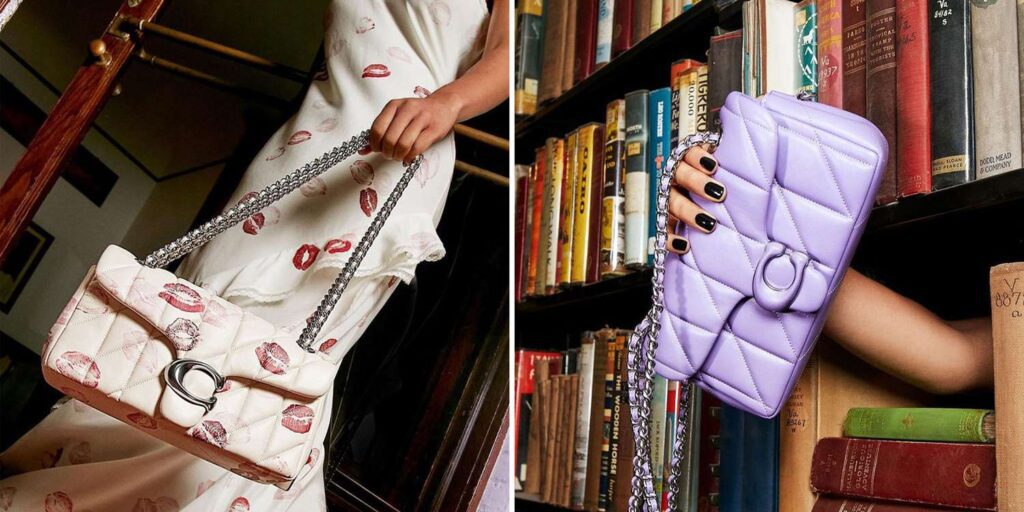Nike has prevailed in the latest round of a case over “copycat” footwear. In an order dated February 8, Judge Mark Scarsi of the U.S. District Court for the Central District of California refused to dismiss the trademark infringement, false designation of origin, and unfair competition claims that Nike waged against John Geiger Collection in connection with the Los Angeles-based brand’s attempt to “capitalize on the strength and fame of Nike and its Air Force 1 (“AF1”) by making, promoting, advertising, marketing, and selling footwear bearing the AF1 trade dress and/or confusingly similar trade dress,” albeit without Nike’s involvement or authorization.
In an amended complaint that it lodged in August, in which it added John Geiger as a defendant to the existing trademark suit that it had initially filed against footwear manufacturer La La Land in January 2021, Nike alleged that Geiger has taken “systematic steps in an attempt to falsely associate [its] infringing products with Nike,” and has “attempted to capitalize on Nike’s valuable reputation and customer goodwill” by using its Dunk and AF1 trade dress, as well as its iconic swoosh logo, “in a manner that is likely to cause consumers and potential customers to believe that the infringing products are associated with Nike, when they are not.”
Geiger’s Motion to Dismiss
In response to Nike’s move to add it as a defendant to the La La Land lawsuit, Geiger filed a motion to dismiss, arguing that the Beaverton, Oregon-based sportswear titan has fallen short in making its trademark claims, including by failing to establish the critical element of whether consumers are likely to be confused about the nature of Geiger’s “lookalike” sneakers, and urging the court to toss out Nike’s claims against it as a result.
Following an opposition from Nike, Judge Scarsi denied Geiger’s motion to dismiss, finding that Nike adequately pleaded its claims. First addressing Geiger’s argument that Nike failed to make a viable trademark infringement claim because “the trade dress elements that Nike claims that Geiger infringed – things like the stitching that holds the sneaker together – are primarily functional, and lack the distinctiveness required to obtain a trade dress registration in the first place.”
Unpersuaded, the court held that Geiger’s argument that the AF1 trade dress “encompasses functional elements” – and thus, cannot serve as a trademark – “because each of the elements are functional” is either “unsupported or based on extraneous evidence” that does not appear in the complaint or that is “not fairly incorporated in the complaint.” Moreover, Geiger “does not explain why the different elements in the AF1 trade dresses cannot be ‘combined into a non-functional aesthetic whole.” In contrast, Judge Scarsi states that Nike has adequately pleaded that “the total composition of the AF1 sneakers is nonfunctional.”
The court held that Nike similarly showed that despite Geiger’s claim to the contrary, “the presence of the Swoosh mark on AF1 shoes does not defeat [its] allegations” that the configuration of the AF1 enjoys secondary meaning, thereby, enabling it to function as a trademark. In its amended complaint, Nike pointed to its “marketing of the AF1 shoes, the extensive sales of these shoes, and the recognition these shoes garner in the broader community,” which the court determined are “enough facts to make … the secondary meaning element ‘plausible on its face.’”

(In its motion to dismiss, Geiger argued that while the Swoosh logo is “undoubtedly the most distinct source identifier of Nike’s sneakers,” Nike does not “sufficiently allege that the AF1 trade dress on its own would serve the same purpose.” Unlike the instantly-identifiable Swoosh logo, Geiger argued – unsuccessfully – that the elements that make up the AF1 trade dress have “little to no ‘source-identifying function,’” making it so that the shoe design, itself, in lieu of the Swoosh, is not protectable as a trademark.)
While the parties similarly clashed on Nike’s false designation of origin, unfair competition, and common law trademark infringement claims, the court sided with Nike across the board for the same reasons as it set out above.
On the false designation of origin front, Geiger pushed for dismissal on the basis of the Deckers Outdoor Corp. v. J.C. Penney Co. Inc. case, in which a Central District of California judge found that “a misappropriation of trade dress claim cannot be brought as a false designation of origin claim.” Agreeing with Nike, Judge Scarsi stated that he believes that the Deckers court got the case wrong by extending the reasoning of Dastar Corp. v. Twentieth Century Fox case beyond “the narrow instance in which a plaintiff alleges the defendant has violated the Lanham Act by falsely designating the origin of a ‘communicative product.’” With that in mind, the court refused to dismiss Nike’s false designation of origin claim based on the Deckers decision.
And in a final blow to Geiger, the court refused to sever the claims against that Nike has lodged against it from those that Nike has asserted against La La Land. Geiger argued for separating Nike’s claims, as they “do not arise out of the same transaction or occurrence, there is no factual commonality between the claims against [it] and La La Land, and joinder is fundamentally unfair.” Siding with Nike, Judge Scarsi stated that, among other things, Nike alleges that Geiger has infringed its AF1 trademarks by selling goods that were manufactured by La La Land. Such a manufacturing scenario meets the “same transaction or occurrence” standard, thereby, giving rise to “common questions of law and fact” between the two defendants. As such, the court denied Geiger’s motion to sever.
The case is Nike, Inc. v. La La Land Production & Design, Inc., 2:21-cv-00443 (C.D. Cal.)











